| Home > Oiire > Senkichi Nimai Ura (Double Back Hollow) 22mm |
|
Probably well made White Steel #2. Fairly easy to sharpen, but the edge is quite tough. These are over 30 years old stock, so the age hardening effect might have hardened it to this level.
Usu-nomis are thinner chisels that are used for places where normal Oiire-nomi (bench chisels) can't fit. For instance, for making a narrower tennon hole, opening the socket of plane block, etc. The thickness ranges from 4mm at the tip to 6mm at the neck where it is the thickest. As you can see the neck is made flat as well. These can also be used just like Oiire-nomi.
The overall length is 30cm, so it is more Tataki-nomi rather than Oiire.

Initial status. It takes much time and effort to bring back these kind of rusty chisel back into life, but old tools tend to be finer in steel grain, so it is worth the work. Makes the restoration much easier when there's not much rust in the back hollow.
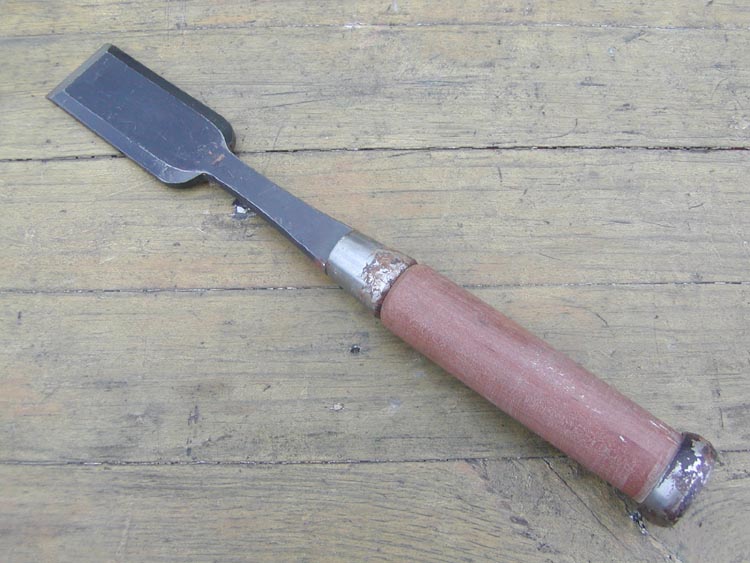
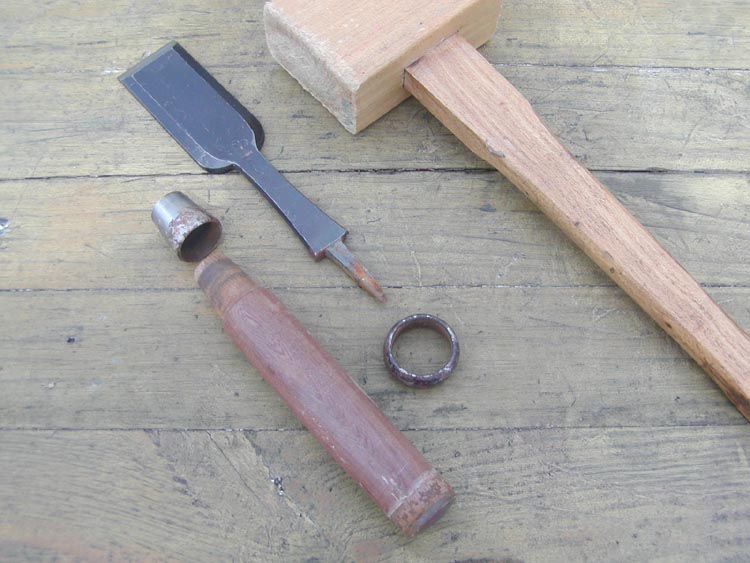
First step is to take all the parts apart, and polish up the hardwares and the handle.
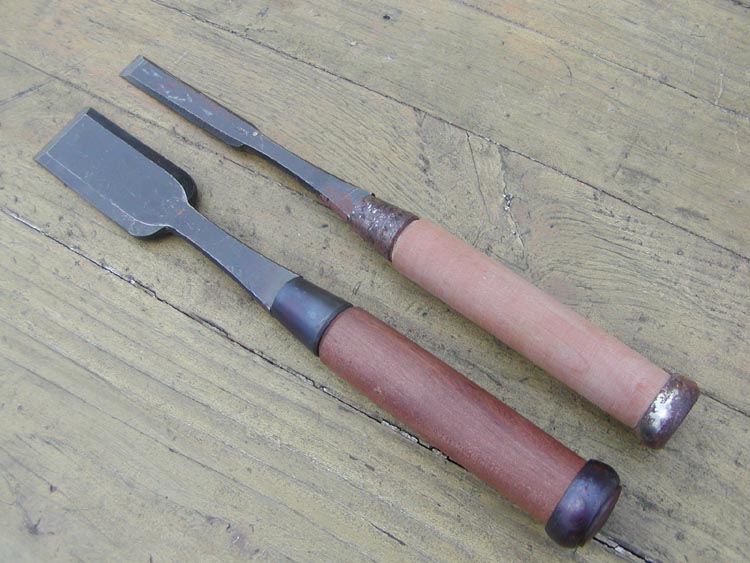
The one shown below has its handle restored. Handle polished and oiled. I'm not sure of the handle material but it is a very very hard and dense wood. I'm guessing "Kaba (Japanese birch?)" which is used for the abacus beads in Japan. Abacus beads need to be quite high in shock resistance, because they are pierced through when they are so small, and flicked up and down in high speed. Quite expensive material which is rarely used for handle material these day.
Kuchigane (ferrule) and the hakama (striking hoop) polished and coloured in traditional Tokyo way. The body of the chisel is not restored yet at this point.
The chisel shown above is the one I will be restoring the next. It is the worst one I have with deep rust in the back hollow. Kuchigane is basically completely covered with rust.... See how it goes as the restoration proceeds(^^)
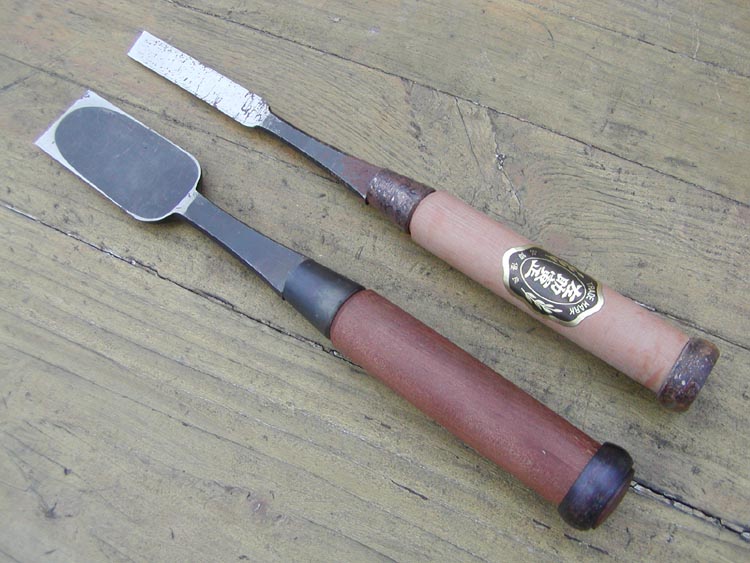
You can see how rusty it is in the back hollow for the one shown above.
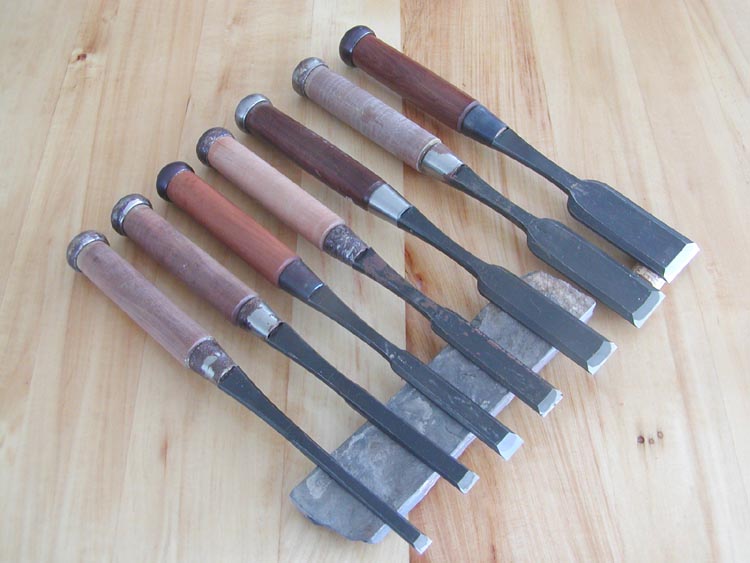
From the bottom, 9mm, 12mm, 15mm (restored), 21mm, 24mm, 36.5mm (restored)
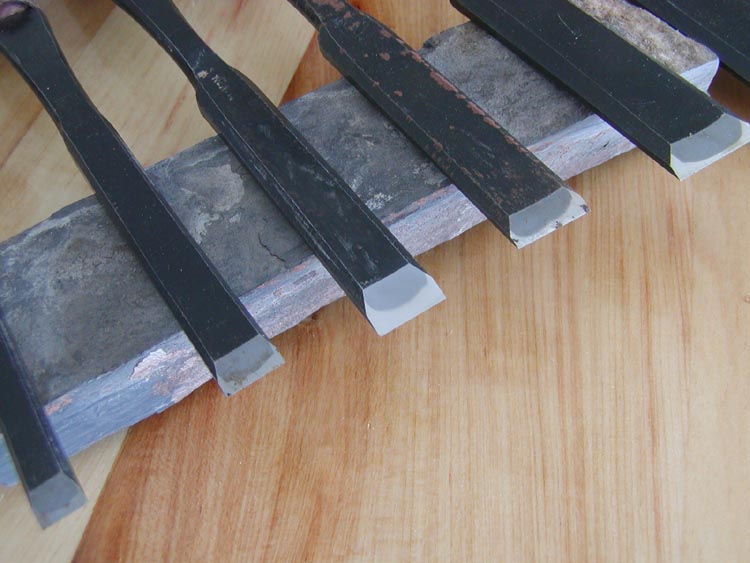
15mm in the middle, restored and sharpened.
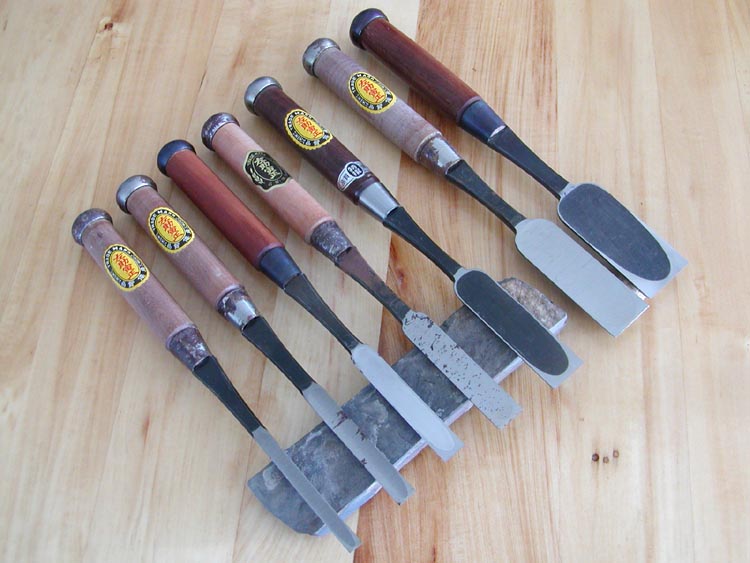

The back of 15mm was restored using a sen. I learned this technique from master Iwasaki Shigeyoshi, and his apprentice who is in charge of all Iwasaki products Mizuochi-san, when I forged a kiridashi knife at their factory.
The back now looks better than it's original machine ground back!(^^) The hollow is now ground in "Tatesuki (ground lengthwise)" as seen in tools such as Usui planes. The hairline is much finer than the original machine ground back hollow. I even finished it using a natural stone.
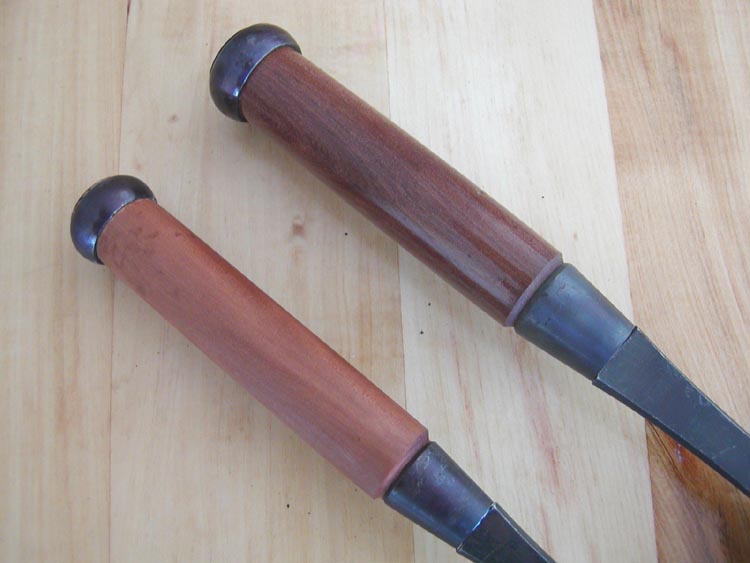
The handle is polished and oiled. The hardwares are coloured to purplish blue in traditinal Tokyo style. This colour is not done by pigment, so it won't come off unless you sand it or polish it with coarse compound. I learned this technique from Watanabe-san from Kiyohisa nomi.
As you can see my trip to Japan was very fruitful, I got to learn so many usuful things!
